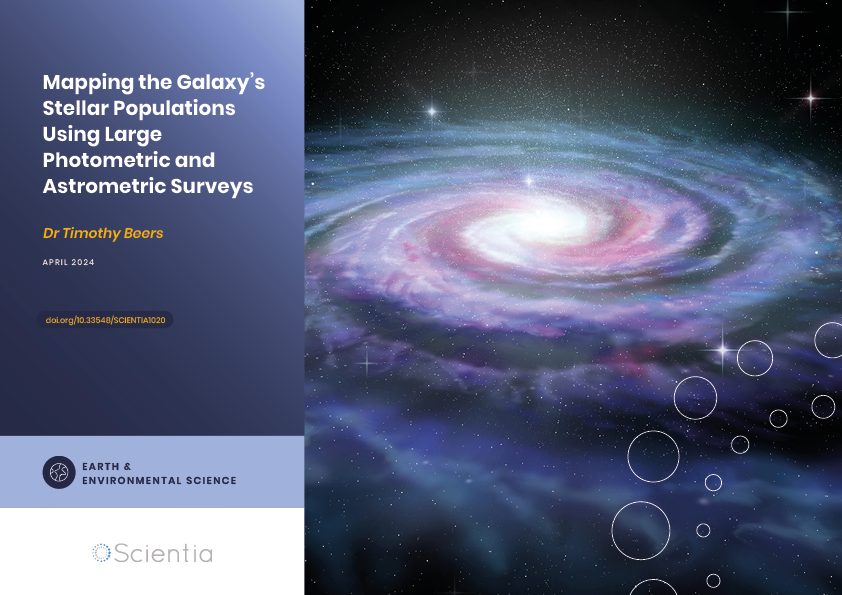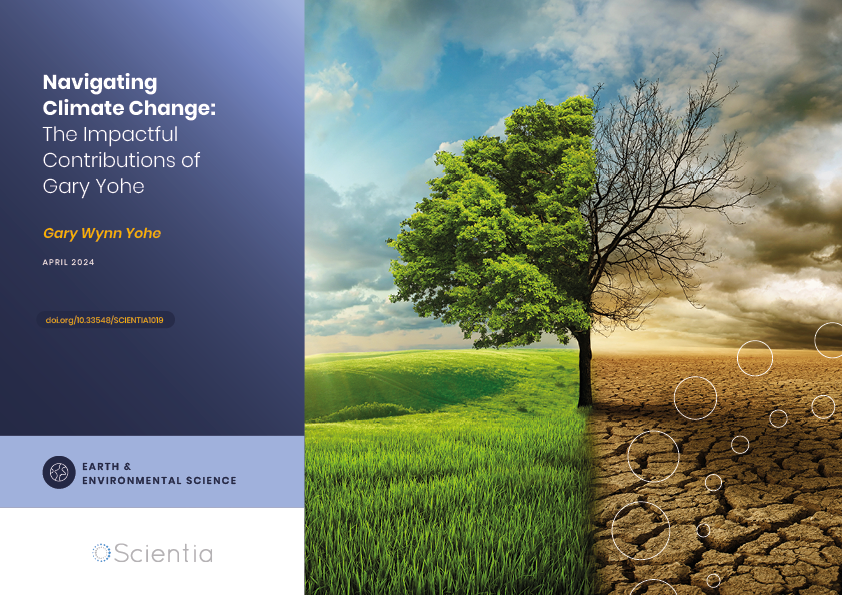Dr Li-Qing Jiang – Mapping the Impact of Carbon Emissions on the Oceans
The climate crisis and the chemistry of the oceans are inextricably connected. The oceans have absorbed close to a third of our carbon dioxide emissions since the beginning of the Industrial Revolution, leading to an increasingly acidic environment and making it more difficult for organisms such as corals, molluscs, and plankton to form their shells and skeletons. Mapping future changes in ocean chemistry is the first step in developing mitigation strategies. However, our knowledge of the future state of the oceans relies on mathematical models that are often not calibrated with modern ship-based observations. Dr Li-Qing Jiang of the University of Maryland and his collaborators are improving ocean acidification predictions by coupling millions of past and present ocean chemistry measurements with the best model projections at each location of the global ocean.
The Ocean as a Carbon Sink
The global oceans have absorbed about 30% of the carbon dioxide released by human activity over the past 200 years. As it dissolves in seawater, carbon dioxide reacts with water to form a weak acid called carbonic acid. Therefore, as atmospheric carbon dioxide increases, so does the acidity of the oceans – a process called ocean acidification.
When ocean acidity rises, calcium carbonate saturation – which describes the tendency of calcium carbonate minerals to form or dissolve – decreases. As many marine organisms need calcium carbonate minerals to build their protective shells and skeletons, they can suffer from slow growth and even dissolution when the ocean is too acidic. Ocean acidification is already having catastrophic effects on coral reefs, some of the world’s most important and biodiverse ecosystems.
With increasing acidity, however, we stand to lose more than just coral reefs. Ocean acidification, in conjunction with future climate change, could cause a knock-on effect on the whole marine food web. A decline in these species, which are prey for larger creatures, would also be disastrous for the commercial fishing industries and the people who rely on them.
Mitigating the worst effects of ocean acidification requires knowledge of how fast ocean chemistry is changing and which areas are most vulnerable. Past and future ocean acidity can be extracted from global mathematical models of the whole Earth system. However, precise predictions for the future require accurate past and present ocean chemistry records.
Dr Li-Qing Jiang of the University of Maryland, and his collaborators at the NOAA’s Pacific Marine Environmental Laboratory in Seattle and the University of Bergen in Norway, use state-of-the-art mathematical models, along with modern seawater measurements spanning the entire globe, to provide better ocean acidification predictions than ever before.
Using millions of measurements, Dr Jiang’s team can more accurately map ocean chemistry and predict variations in the ocean’s response to human carbon emissions on a regional scale. Building an accurate map of future ocean acidification is critical for Earth’s large coastal populations. Such communities not only rely on the oceans for their food, but coastal economies are also heavily dependent on the aquaculture and tourism industries.
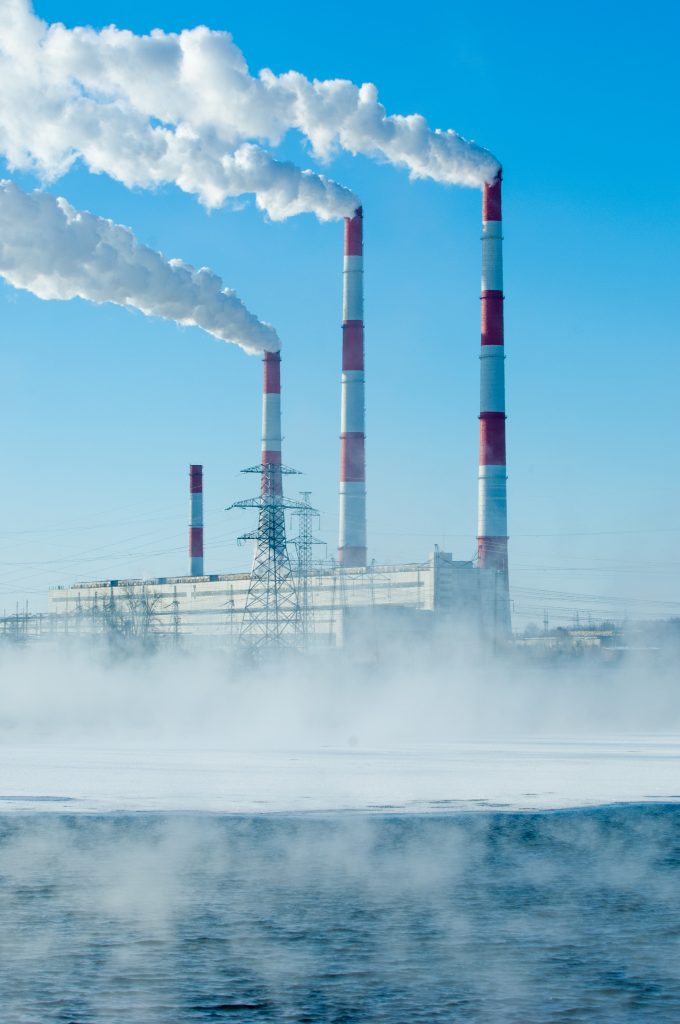
Measuring and Predicting Ocean Acidification
There are several different ways to assess ocean acidification, but two of the most common indicators are ocean pH and calcium carbonate saturation. These two metrics are sensitive to carbon dioxide emissions, and they both play a role in the health and wellbeing of marine ecosystems.
Some pH measurements date back to the early 20th century, but early records suffer from larger uncertainties and can be unclear about the measurement methods used, making it difficult to compare them with current data. For example, until the late 1980s, scientists typically measured pH with glass electrodes, which have high measurement uncertainties. More precise measurements are now possible due to the development of spectrophotometric techniques, where a pH-sensitive dye is added to seawater samples.
Dr Jiang and his colleagues use modern, accurate carbon dioxide measurements from the Surface Ocean CO2 Atlas (SOCAT) data product to calculate pH and combine the data with Earth System Models to build a trajectory of past, present and future ocean acidity for all locations of the global ocean. They were able to derive 23 million surface ocean pH values based on carbon dioxide measurements collected between 1991 and 2018, with historical and future trends from an Earth system model. Models can give accurate predictions of the temporal pH change, but the team’s addition of local observations means better predictions of regional acidification trends, which could help guide local adaptation strategies. The result is a detailed map of surface ocean acidity changes spanning the past and present, and more accurate predictions for the future.
Dr Jiang and his colleagues discovered that the average pH of the ocean surface fell by 0.11 between 1770 and 2000, meaning that the ocean is now 30% more acidic than in pre-Industrial times. The drop is more prominent in areas where the ocean has a lower buffer capacity – which is a measure of how much carbon dioxide can be added before profound chemical changes occur. The Arctic Ocean showed the most considerable decrease in pH of 0.16.
Using a range of possible future emissions scenarios, the team predicted future changes in ocean pH. Assuming a ‘business as usual’ scenario in which our current emissions trajectory continues, known as RCP 8.5, ocean surface pH is expected to decrease by about 0.33, corresponding to an acidity rise of over 110%, between 2000 and 2100. This value is larger than the entire modern pH range of surface seawater. Under RCP 4.5, described as an intermediate scenario, pH would decrease by 0.13.
The most significant pH changes will occur at high latitudes, while regions of upwelling around the equator will change more slowly. This is because rising deep water tends to have low concentrations of human-produced carbon dioxide.
Perhaps most worryingly, the buffer capacity of the ocean is projected to decrease. While the sea will continue to take up more carbon dioxide in the future due to the higher levels of atmospheric carbon, its role in absorbing emissions will gradually diminish. With a reduced buffer capacity, the chemical changes observed by Dr Jiang and his colleagues will accelerate.
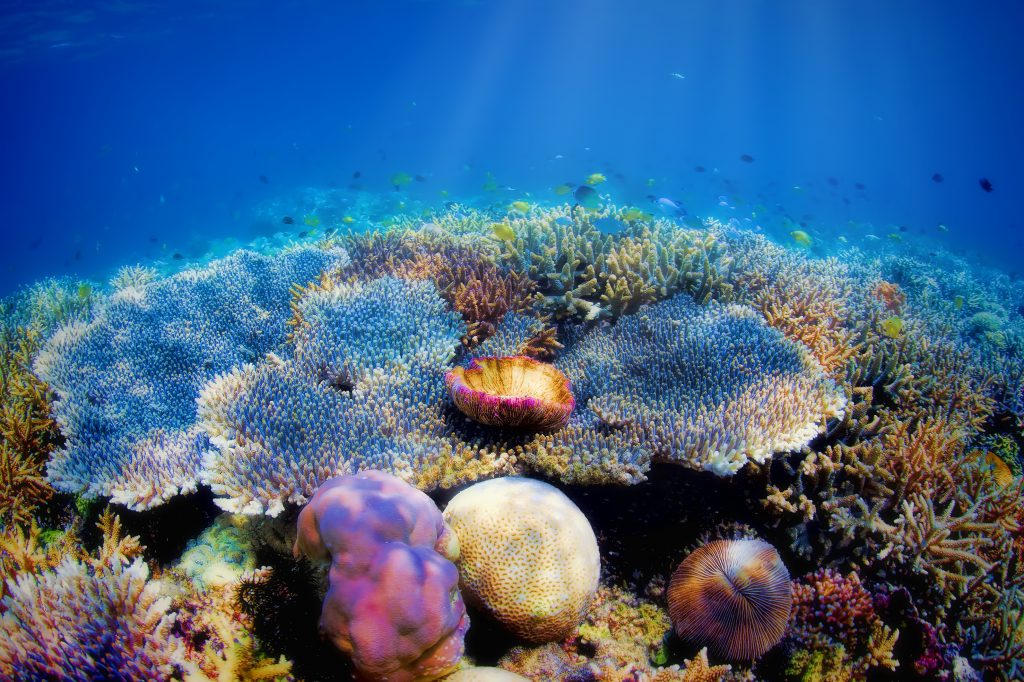
Mapping the Saturation of Aragonite
The shells and skeletons of marine organisms are made up of calcite or aragonite – two mineral forms of calcium carbonate. Oceanographers are particularly interested in aragonite, which is more soluble than calcite. Organisms with aragonite skeletons include some species of coral, plankton, and molluscs. When aragonite saturation in the water is low, meaning that aragonite has a tendency to dissolve, these organisms struggle to grow. Therefore, aragonite saturation in seawater is a valuable indicator of the ecological impacts of ocean acidification.
Dr Jiang and his colleagues found that between 1970 and 2010, aragonite saturation decreased by 0.4% per year – a critical indicator that ocean acidification is taking its toll. While most of the tropical and subtropical ocean still has high aragonite saturation, there are significant zones of low saturation around the polar regions.
The team’s research has highlighted vulnerable areas where aragonite saturation is already low, such as the high latitude areas. Deep water in the North Pacific Ocean and the northern Indian Ocean is deficient in aragonite because it is older than deep water in the Atlantic – meaning it has spent more time accumulating carbon dioxide at depth. Chemical reactions caused by the decay of organic matter create a build-up of carbon dioxide in the deep ocean, making it more acidic. In the surface, aragonite saturation is lower in areas where more acidic water from the deep sea rises to the surface, adding to the acidity caused by human emissions.
Dr Jiang’s work also highlighted that at the ocean’s surface, pH is relatively uniform across the globe, but aragonite saturation is lower near the poles and higher near the equator due to the temperature difference. Because aragonite saturation varies with temperature, future predictions of aragonite saturation will need to take into account changes in sea surface temperature in a warming world.
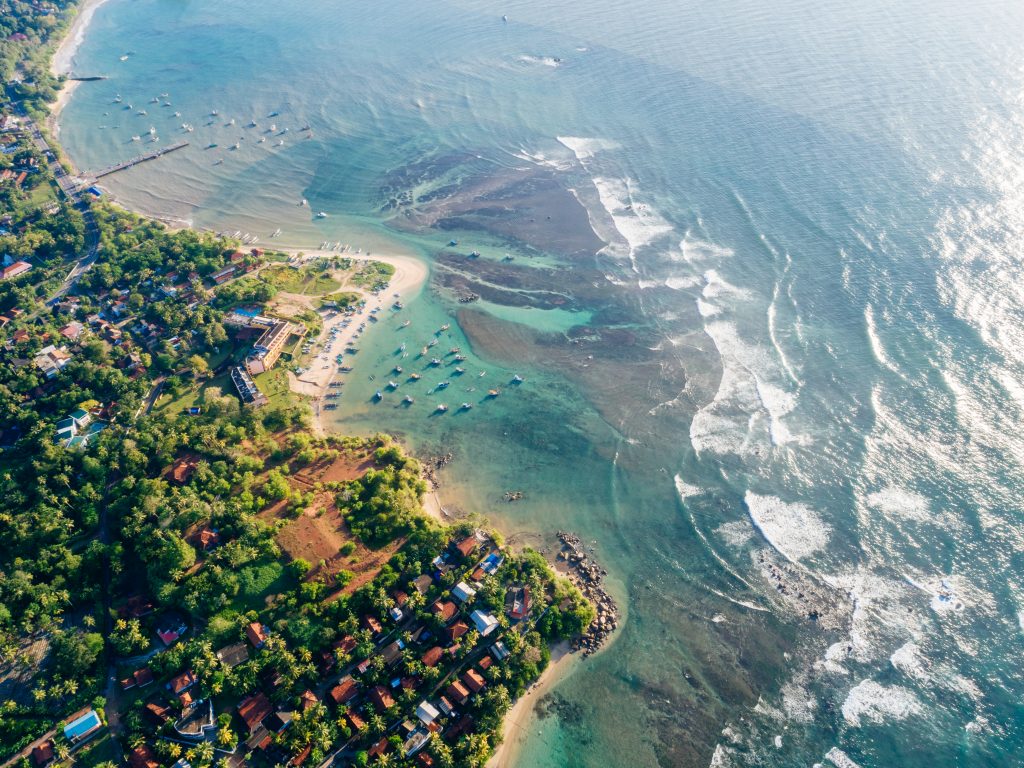
Predicting the Trends of Acidification on a Local Scale
Dr Jiang and his colleagues have recently been funded to synthesise and quality-check ocean acidification data in coastal areas, where it can have significant societal and economic impacts. Coastal regions are home to 50% of the world’s population, and this figure is rising. We are dependent on coastal oceans, which produce 90% of the global fisheries yield and contain 80% of known marine fish species.
Predicting chemistry changes in the coastal oceans is no easy job. The continental shelves surrounding coastlines are very different from the open ocean due to the shallow water depth and the influence of rivers.
The complexity of coastal ocean processes means there can be significant differences between coastal seas. For example, in the US, ocean acidity along the west coast is controlled by the upwelling of acidic deep water. In contrast, riverine input of low pH water has more of an impact along the east coast.
Unlike the open ocean, coastal seawater chemistry data are often collected by multiple labs using different instruments and varying quality control methods. Building an accurate picture of coastal ocean acidification requires compiling and synthesising decades of data from numerous sources, which is a mammoth task.
Dr Jiang’s initial plan is to build such a data product for the coastal oceans bordering the US. Developing future predictions of pH and aragonite saturation on a regional scale will provide actionable information for local decision makers. He and his colleagues hope that their methodology could be replicated in other regions and could catalyse future ocean acidification research worldwide.
Understanding just how the oceans are changing and which areas are most vulnerable is an essential first step in avoiding an ecological catastrophe.
Reference
https://doi.org/10.33548/SCIENTIA669
Meet the researcher

Dr Li-Qing Jiang
CMNS-Earth System Science Interdisciplinary Center
University of Maryland
College Park, MD
USA
Dr Li-Qing Jiang is a chemical oceanographer specialising in ocean acidification caused by human carbon dioxide emissions. He received his PhD in Oceanography from the University of Georgia in 2009, subsequently securing a postdoctoral research position at Yale University. In 2011, Dr Jiang moved to the University of Maryland, where he is currently an Associate Research Scientist working at NOAA’s National Centers for Environmental Information. Dr Jiang has published numerous studies in prestigious peer-reviewed journals on the global carbon cycle and mineral saturation in the ocean. His current work focuses on the synthesis and quality control of seawater chemistry data to better predict future ocean acidification trends on a local scale. Dr Jiang has been awarded multiple prestigious fellowships and awards for his contributions to science.
CONTACT
E: liqing.jiang@noaa.gov
W: http://essic.umd.edu/joom2/index.php/faculty-and-staff?layout=user&user_id=671
KEY COLLABORATORS
Dr Richard A. Feely, NOAA Pacific Marine Environmental Laboratory
Dr Rik Wanninkhof, NOAA Atlantic and Oceanography Meteorological Laboratory
Dr Brendan Carter, NOAA Pacific Marine Environmental Laboratory
Dr Are Olsen, Geophysical Institute, University of Bergen and Bjerknes Centre for Climate Research
Dr Siv Lauvset, NORCE Norwegian Research Centre, Bjerknes Centre for Climate Research
FUNDING
NOAA’s Ocean Acidification Program
FURTHER READING
L-Q Jiang, RA Feely, R Wanninkhof, D Greeley, L Barbero, S Alin, BR Carter, D Pierrot, C Featherstone, J Hooper, C Melrose, N Monacci, J Sharp, S Shellito, Y-Y Xu, A Kozyr, RH Byrne, W-J Cai, J Cross, GC Johnson, B Hales, C Langdon, J Mathis, J Salisbury, DW Townsend, Coastal Ocean Data Analysis Product in North America (CODAP-NA) – An internally consistent data product for discrete inorganic carbon, oxygen, and nutrients on the U.S. North American ocean margins, Earth System Science Data Discussions [preprint], https://doi.org/10.5194/essd-2020-402, 2021, in review.
L-Q Jiang, B Carter, RA Feely, S Lauvset, A Olsen, Surface ocean pH and buffer capacity: past, present and future, Nature Scientific Reports, 2019, 9, 18624.
L-Q Jiang, RA Feely, B Carter, DJ Greeley, DK Gledhill, and KM Arzayus, Climatological distribution of aragonite saturation state in the global oceans, Global Biogeochemical Cycles, 2015, 29, 1656.

Want to republish our articles?
We encourage all formats of sharing and republishing of our articles. Whether you want to host on your website, publication or blog, we welcome this. Find out more
Creative Commons Licence
(CC BY 4.0)
This work is licensed under a Creative Commons Attribution 4.0 International License. 
What does this mean?
Share: You can copy and redistribute the material in any medium or format
Adapt: You can change, and build upon the material for any purpose, even commercially.
Credit: You must give appropriate credit, provide a link to the license, and indicate if changes were made.
More articles you may like
Dr Timothy Beers | Mapping the Galaxy’s Stellar Populations Using Large Photometric and Astrometric Surveys
Astronomers often use spectroscopic (electromagnetic radiation) data and astrometric (motion and positional) data to develop working models describing our Galaxy. Dr Timothy Beers from the University of Notre Dame and his collaborators in Korea and China combined large photometric (visible light) surveys and astrometric data to create multidimensional maps of a large part of the Galaxy. By highlighting significant inhomogeneities in stellar-chemical compositions, motions, and spatial distributions, Dr Beers and his colleagues provide valuable insights into how we can advance our understanding of the formation and evolution of our Galaxy.
Dr Anushia Inthiran | Distance Learning: Impacts for Offshore Students Amid COVID-19
The COVID-19 pandemic significantly disrupted global education and necessitated a shift to online learning. Due to ongoing border closures, even after the pandemic eased, offshore students were prevented from attending their university in person long after their local peers, impacting their learning ability and future perspectives. Dr Anushia Inthiran from the University of Canterbury conducted a survey among a group of offshore students to understand the consequences of distance learning on their education.
Dr Sébastien Weber | PyMoDAQ: Navigating the Future of Data Acquisition
In an era where data is paramount, Dr Sébastien Weber and his team at CNRS, the French National Centre for Scientific Research, are changing the landscape for scientists and engineers with PyMoDAQ, an open-source data acquisition software. Their revolutionary tool stands out for its accessibility, versatility, and the thriving community it fosters.
Professor Gary Yohe | Navigating Climate Change: The Impactful Contributions of Gary Yohe
Professor Gary Yohe is a distinguished environmental economist whose work has been pivotal in shaping our understanding of climate change impacts, adaptation strategies, and policy frameworks. His interdisciplinary approach combines economics with environmental science, offering nuanced insights into global warming and its multifaceted impacts on natural and human systems. Professor Yohe equips us with the knowledge and strategies needed to navigate the complex and pressing challenges posed by climate change.

